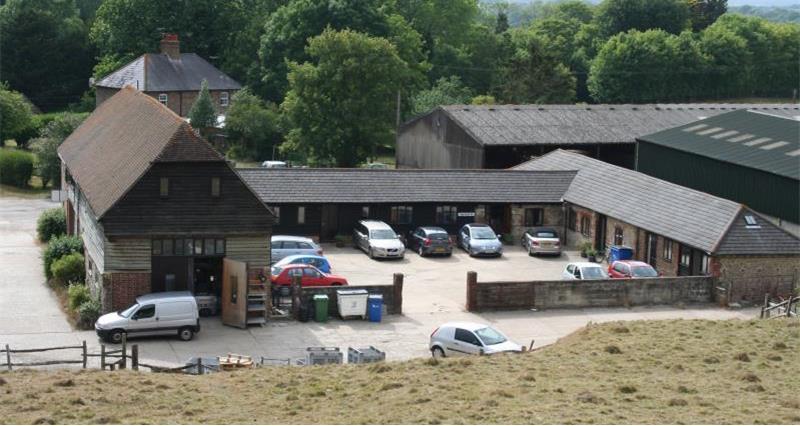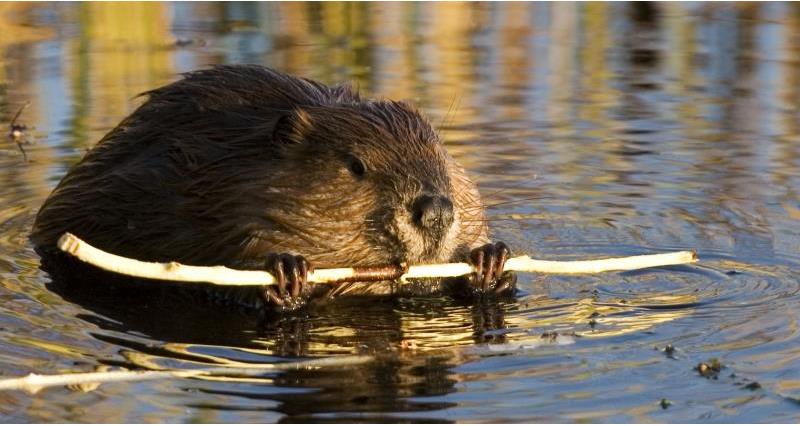Escrick Park Estate near York is participating in a pilot scheme to assist in the preparation of the mandatory BNG (biodiversity net gain) approach to land development. Escrick Park was one of nine pilot locations chosen to test BNG, which is described as a way of contributing to the recovery of nature during land development.
Developments that fall under the Town and Country Planning Act 1990 (unless exempt) in England will have to deliver a mandatory biodiversity net gain of 10% from 1 January, 2024, with a minimum 30-year commitment. If developers cannot meet the target on site, they will be able to buy biodiversity units from land managers who are delivering accredited biodiversity improvements elsewhere.
The estate is planning to demonstrate BNG on land adjacent to the 267-hectare Skipwith Common National Nature Reserve. One of the last remaining areas of lowland heath in Northern England, it is managed by the estate via an agreement with Natural England, and is also a SSSI (Site of Special Scientific Interest) and a SAC (Special Area of Conservation).
"Correct financial modelling is critical to success"
Estate Custodian Beilby Forbes Adam
The common receives Higher Level Stewardship support and is grazed by Hebridean sheep, Longhorn cattle and Exmoor ponies.
Estate custodian, Beilby Forbes Adam says: “The mosaic of wet and dry heath on Skipwith Common National Nature Reserve provides extremely important habitat for a wide range of wildlife species. By grazing and browsing the scrub, the livestock stimulate regrowth and generate disturbance. This maintains the site’s incredible diversity, securing its survival for generations to come.
Phased implementation
The practical measures to prepare for our entry into the BNG scheme are likely to be implemented in two phases, Beilby Forbes Adam explained.
Phase one
“Phase one is expected to see the conversion of 9.6-hectares of former arable fields to heathland to the north-east of the nature reserve. It comprises three arable fields, where a combination of factors makes it difficult to achieve target margins for our combinable crops. Historical mapping has shown that the acreage was reclaimed from the heathland in the nineteenth century.
“The drainage system is failing, and the roughly £3,000/acre that would be required to restore the pipework. These are also small fields that are unsuitable for modern machinery. The restoration plans include the removal of the field boundaries to reintegrate the fields with the surrounding heathland and some of the drains will be broken up.”
A vital conversion measure will be to reduce the land’s nutrient and pH status, although a final decision has yet to be made on how this might be achieved. “A variety of methods are associated with nutrient stripping,” he comments. “The fields can be inversion ploughed, which is increasingly frowned upon, or the topsoil can be removed, while sulphur application reduces pH. Following soil test results, we are hopeful that these invasive methods can be avoided and that we will be able to achieve the desired results simply by omitting to apply nutrients and relying on time and natural leaching through the sandy soils.”
Phase two
Phase two of the BNG scheme will involve further extending the nature reserve, through the creation of an approximately 80-hectare buffer/ extension to the north of the existing area. The former high-input grass and arable land will provide a broad range of traditional grassland-based habitats, with the intention of building the common’s climate resilience and adding new habitats where other targeted wildlife species can flourish.
“The historic mapping showed that this area was previously a grassland mosaic, so the idea is to integrate this with existing remnant parcels of lowland meadow,” says Beilby. “The land associated with the two proposed phases will be sown with seed taken from the common and another nearby reserve using a brush- cutting technique. It will also be planted with scrub species. The Longhorn cattle grazing will be used as a management tool in the restoration plan, which in turn we hope will enable us to generate a more financially sustainable suckler herd.”
Subsequent phases may include the extension of the estate’s biodiversity offering, through the creation of further wildlife habitats on other areas of relatively unproductive arable land on the estate, he adds. These would be connected to the reserve on a north-south geographical line, to form a wildlife corridor.
Learning lessons
Many lessons have been learned through the estate’s participation in the pilot scheme, says Beilby.
“Correct financial modelling is critical to success,” he states. “My advice for land managers who are considering the scheme is to make sure that the figures stack up beforehand. It is also a very long-term commitment, and it may notbe beneficial to the business to effectively hold successors hostage to decisions made by the current generation. There is also the question of how much land can be taken out of production, without having a negative effect on farm business viability.
“Chronology is another important factor, as time and money will be wasted if the process is not carried out in the right order. For example, we have recently commissioned a hydrology study, to investigate whether the proposed changes will increase the risk of flooding to adjacent farmland. With hindsight, this should have been conducted at an earlier stage. We are now looking at how this might be mitigated, or perhaps incorporated into the scheme.”
Furthermore, he cautions: “Developing proposals for off-site BNG is done at risk and it is not cheap. Projects require significant survey work and considerable expertise. My advice would be to
start small to find the right advisers, understand the complexities, and work out the level of demand from the local market. Once successful, that is the point at which to consider a larger project.”
Difficult to make firm predictions
The embryonic nature of the BNG scheme means it is difficult to make any firm predictions about the potential financial benefits to the estate, he stresses. Initially due to have been applied across England from November 2023, the mandatory BNG rules have been delayed until early next year, with a staggered introduction according to development type.
“We hope that Skipwith Common’s expansion will go forward as a BNG scheme, but no paperwork has been signed to date,” Beilby says. “The main system for potential payments for biodiversity units will be via the open market and will therefore be market-led. It is also expected that alternative statutory credits will initially be available from Natural England, in order to provide a back-stop while the market matures.
However, they will be significantly more expensive, in order to disincentivise their use.
“For developers, the new rules are simple; if they cannot meet the mandatory biodiversity net gain targets on site, units will have to be purchased off site and farmers and landowners are well placed to deliver this.
“The project involves some considerable financial risk, but we are fully aware that some of our land parcels do not meet the quality standards required for producing a good crop of cereals. Farmers tend to be highly resilient and will keep on going in the face of adversity. Nevertheless, the profitability of arable farming is in decline in real terms and establishing an alternative income stream should reduce financial risk for the estate."Skipwith Common National Nature Reserve is a very special place. It is an isolated fragment of a once more widespread land use with special features that are worthy of preservation. If we can increase its acreage and promote its longevity, while at the same time helping to maintain estate profitability, it would represent a win-win for the environment and for the business,” says Beilby.
How the NFU can help
Seeking professional legal advice to address many of these complexities can help.
NFU members who subscribe to the Legal Assistance Scheme can take advantage of this discretionary benefit, that provides professional guidance and financial support towards legal and other professional costs.
Find more on BNG



